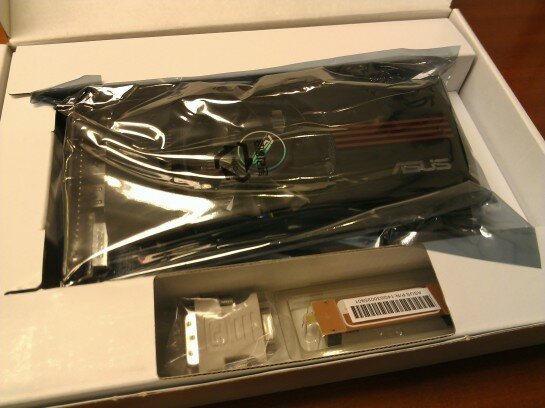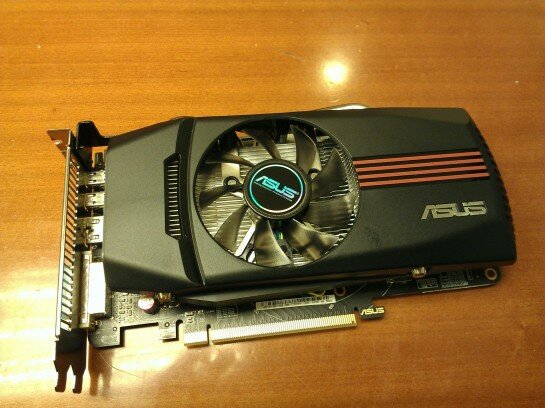Once more into the unboxing breach, this time with the ASUS HD 7770 DirectCU TOP, which arrived factory-fresh at the office today. This is a modest card, measuring 8.5”, and certainly a far cry from the beastly 7900 cards we took in recently.
However, this model is a TOP version, which means a hand-picked GPU selected for enhanced overclocking capabilities. ASUS factory-overclocks this product to 1120MHz, which is 120MHz faster than reference, giving you that extra oomph in games and other heavy applications.
Inside lies an AMD “Cape Verde” 28nm GPU, designed with the Graphics Core Next architecture, which AMD says is a step up from now-standard unified shader technology and the VLIW4 methodology used in the company’s 6000 series of 40nm GPUs.
Since this is effectively a budget gaming card (1.5 billion transistors as opposed to 4.3 billion in the 7970), you should not expect otherworldly performance here, but with DX11.1 and PCI Express 3.0 for good measure, and 1GB of GDDR5, this little wonder will gladly provide nice 1080p output in most games at mid-high settings, while consuming very little power and generating little heat.
It’s also a more practical card for many users who have limited space in the case: the 7770 is a dual-slot part, while the 7970 and 7950 demand three slots and measure over 10” long. That’s a big difference.
As you can see from the front of the box, this is a DirectCU card. Not DirectCU II, so there’s only one fan, but the direct contact pipes make an appearance, and ASUS lab tests confirm this specific variant works up to 20% cooler than reference in identical scenarios. Hey, I’m just glad the knight and the horse made it yet again!
On the back of the box we have highlights of DirectCU, alongside GPU Tweak, the ASUS overclocking and overvolting utility. It’s definitely more extensive than the basic overclocking facilities you get with stock drivers, and in fact will likely come in very handy with the 7770, as I expect this card to prove an excellent overclocker in months to come. We also have a schematic showing the outputs on the back, which tie in nicely to AMD Eyefinity technology. Then there’s a reminder that this is a PCI Express 3.0 card, which is inarguably a good thing.
Inside, we have the card itself, a CrossFire bridge, a DVI to VGA adapter, driver disc, and manual. Sure, not much in the way of frills but the core focus here is the card and the good cost/performance ratio you’re buying into.
The HD 7770 uses a DirectCU shroud similar to the ones we’ve seen before from ASUS, giving it an elegant but performance-y look.
On the back, we have the connectors: two DisplayPort, one HDMI, one DVI.
The side of the card shows the beefy DirectCU heatpipes.
Here’s a close-up of the fan and part of the heatsink.
On the front, we have just one six-pin power connector, indicating the considerable power efficiency of this card.
With DirectCU cooling and GPU Tweak to make the most of it, the HD 7770 DirectCU TOP is a good choice if you’re putting together a gaming PC on a budget. It’s not the biggest and boldest, but it does give you the main benefits of the new technology from AMD: 28nm, DirectX 11.1, and PCI Express 3.0. For the money, this is a very nice and cool graphics card.








